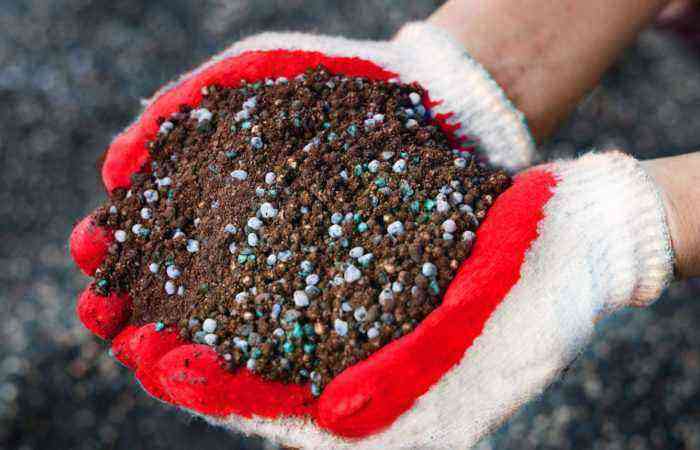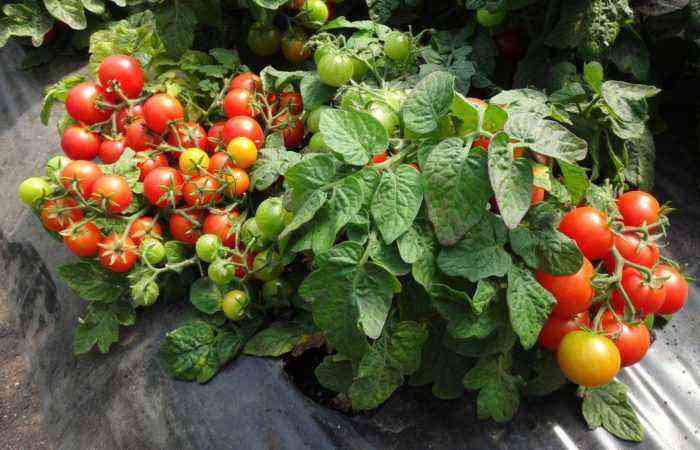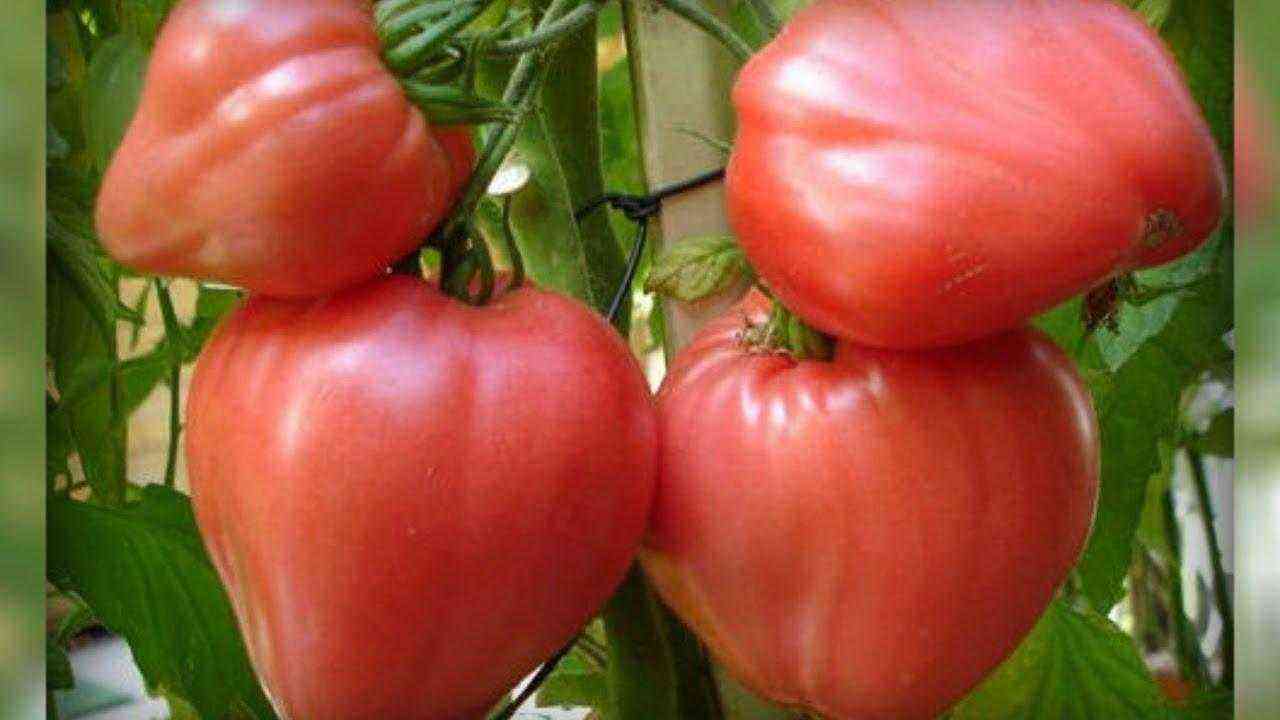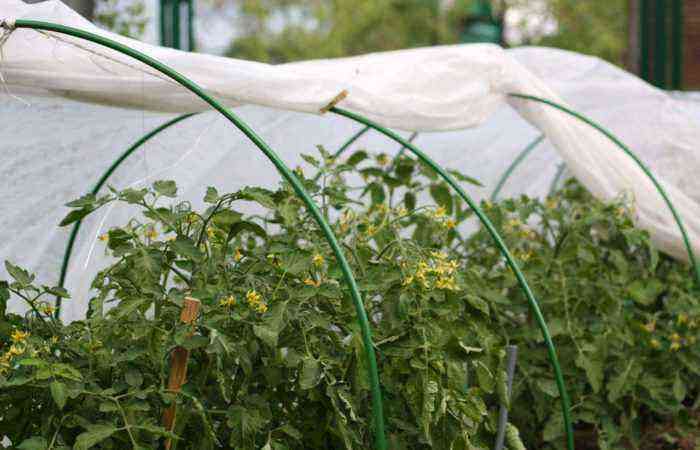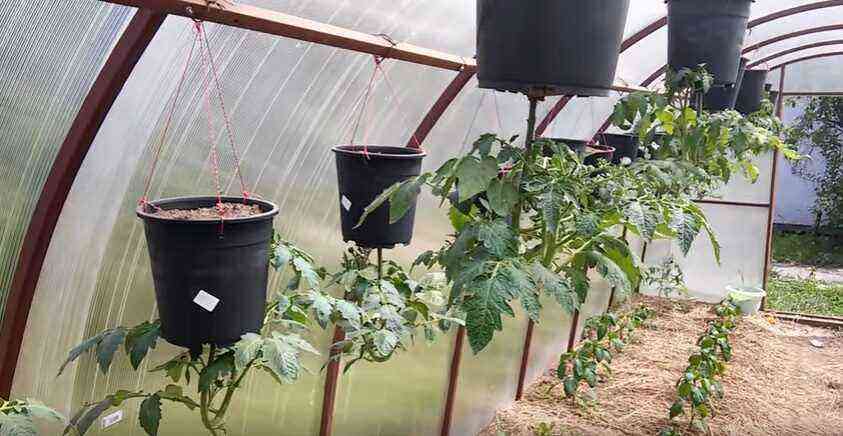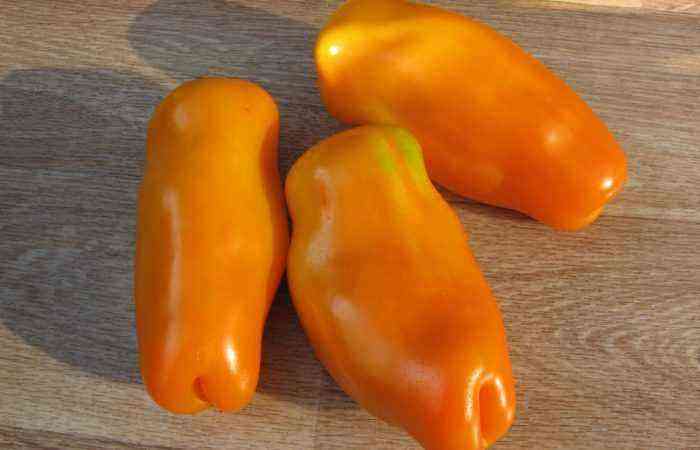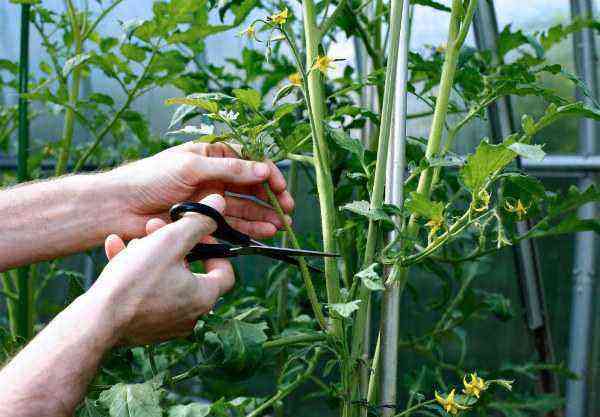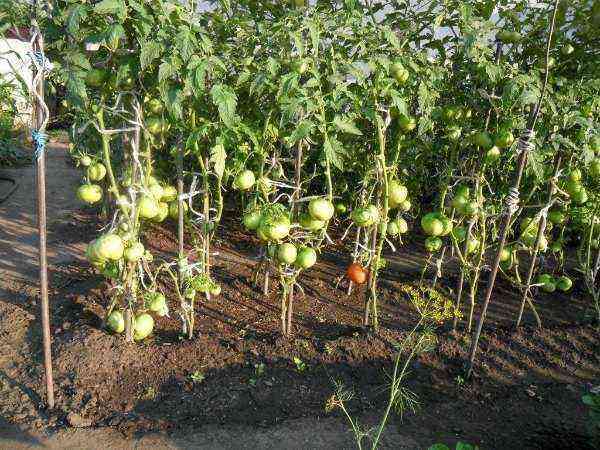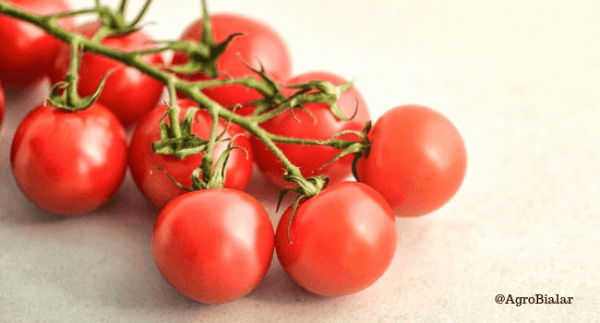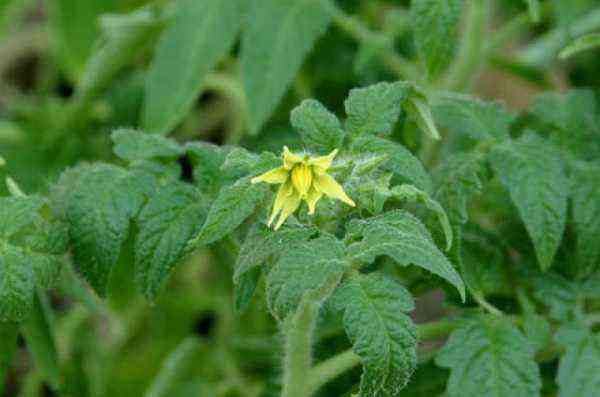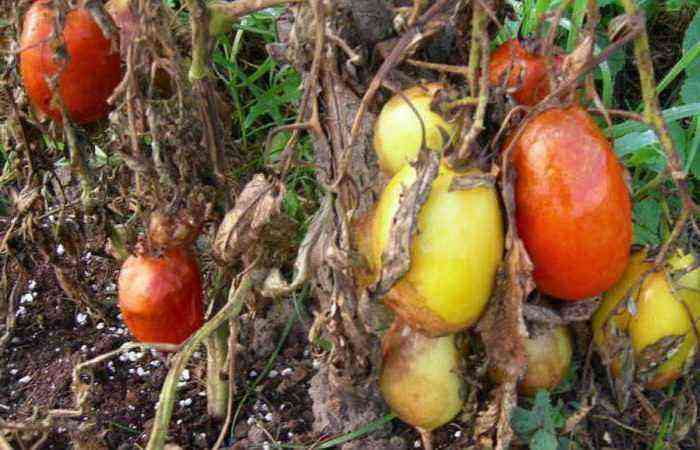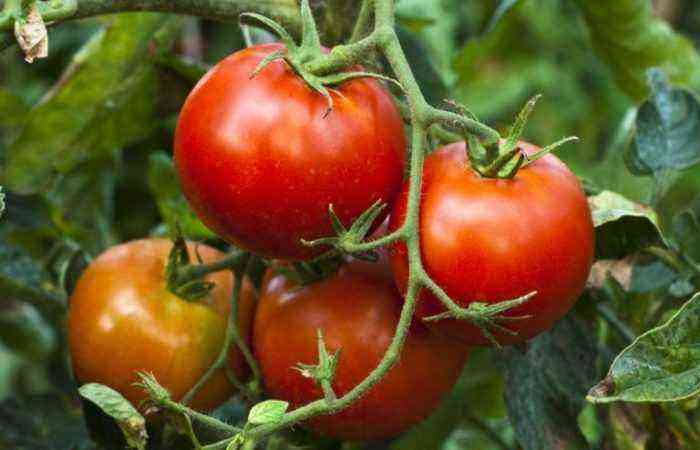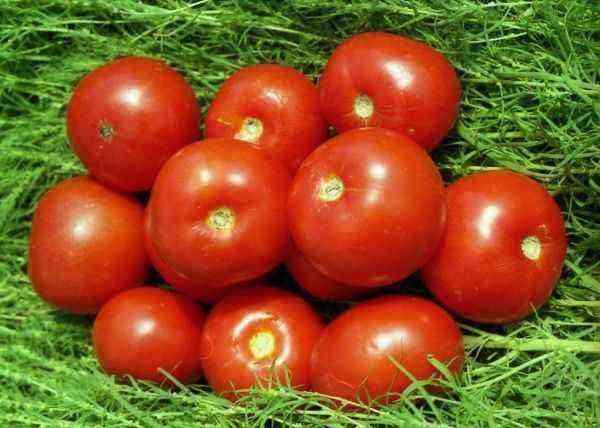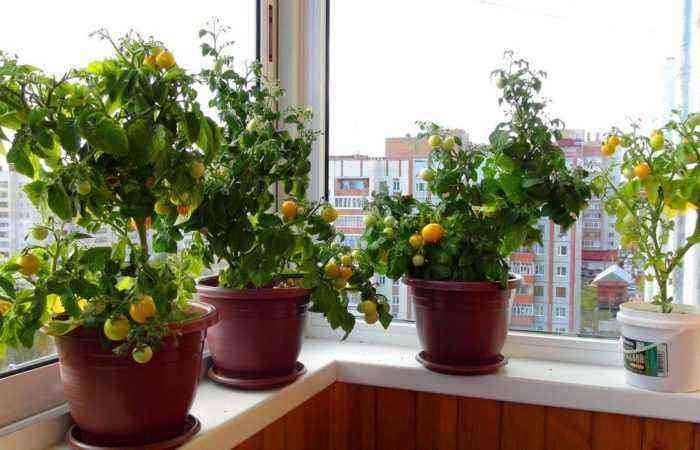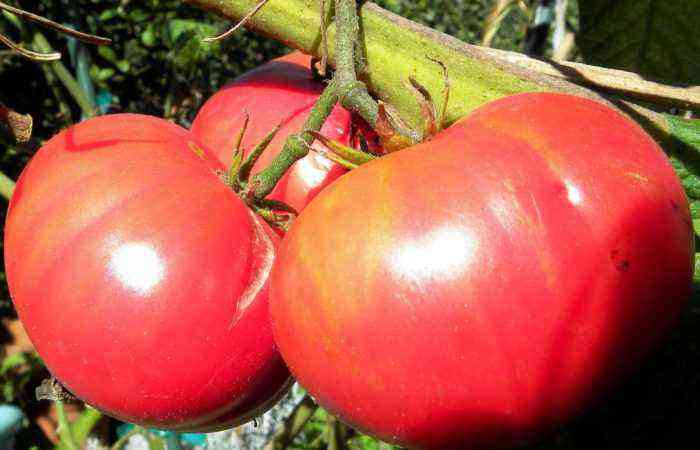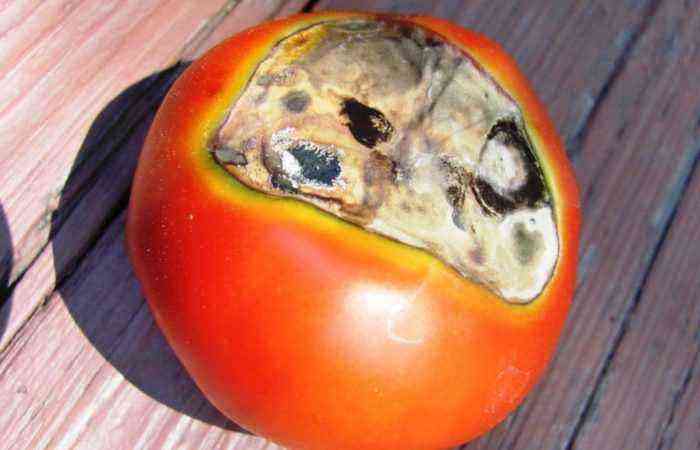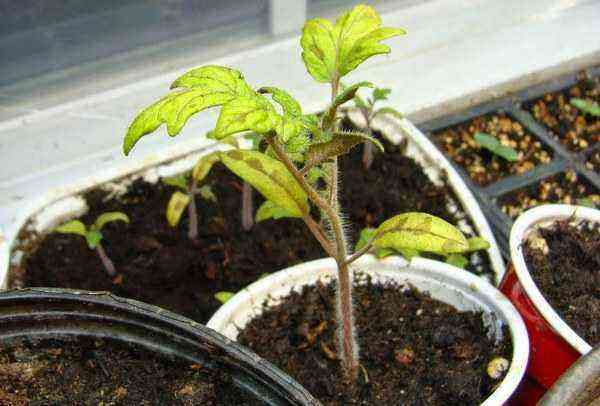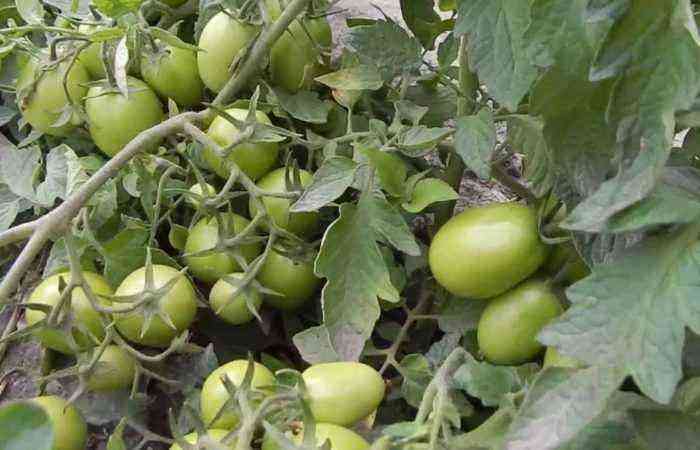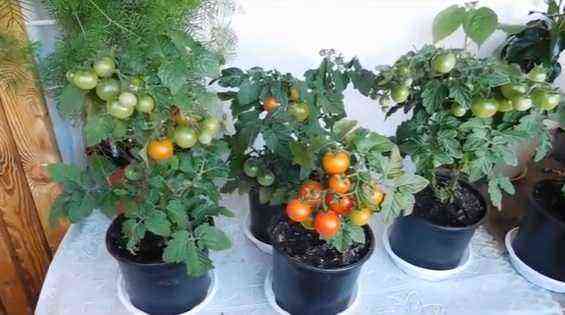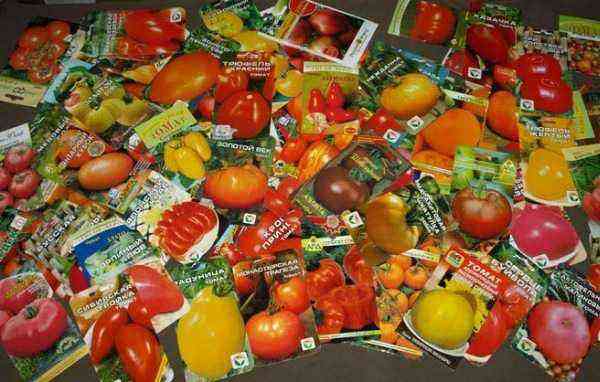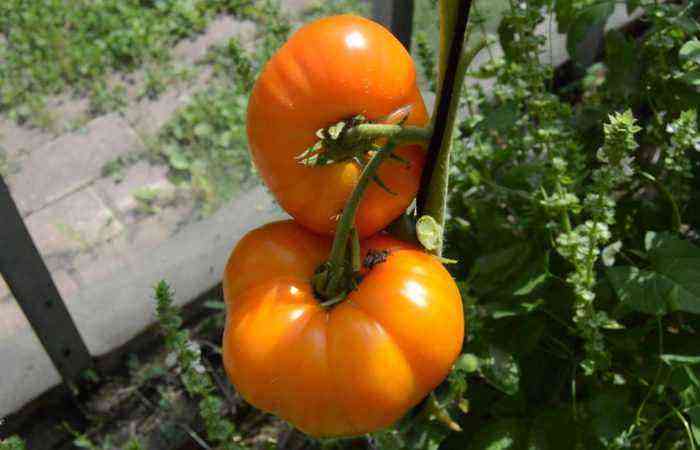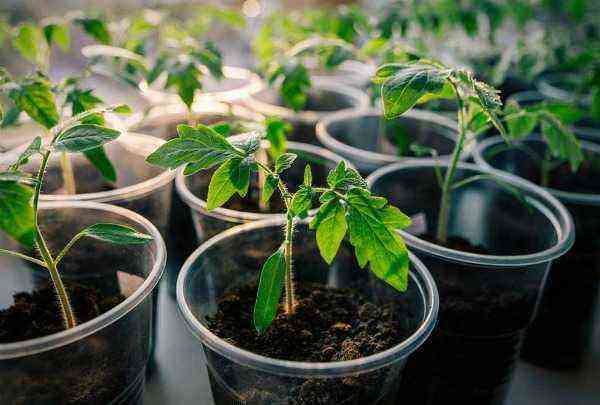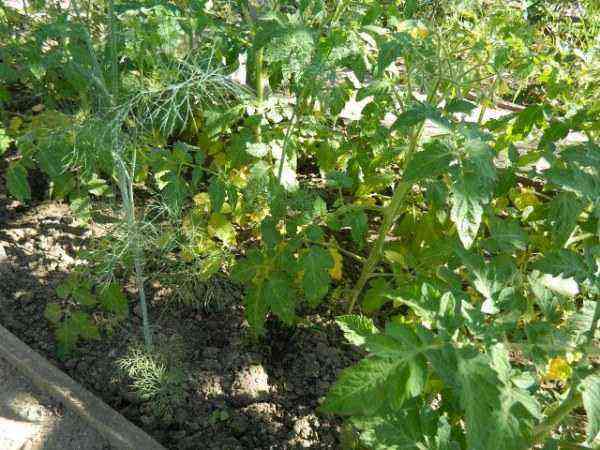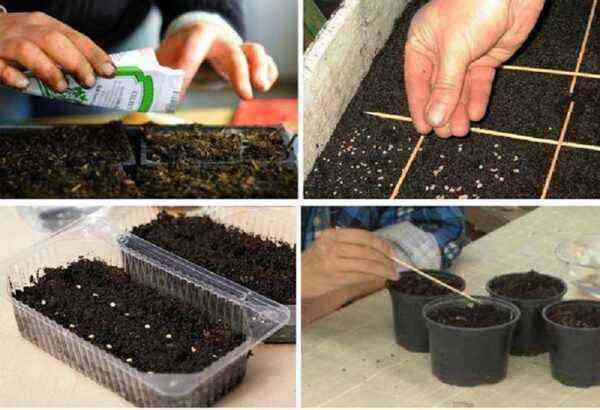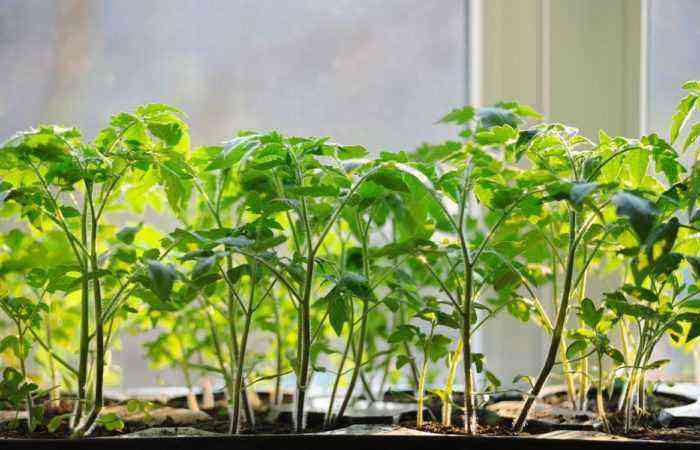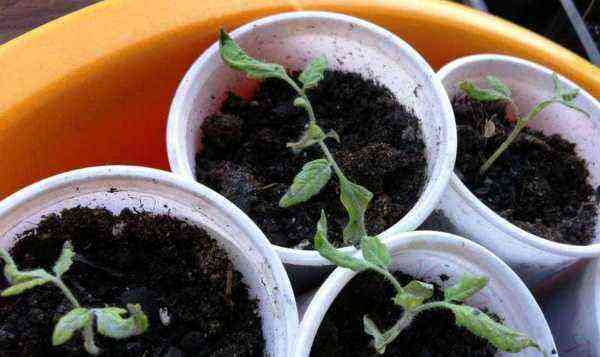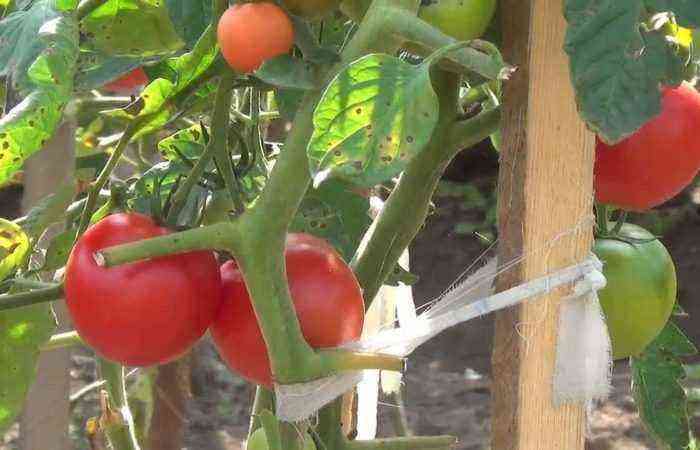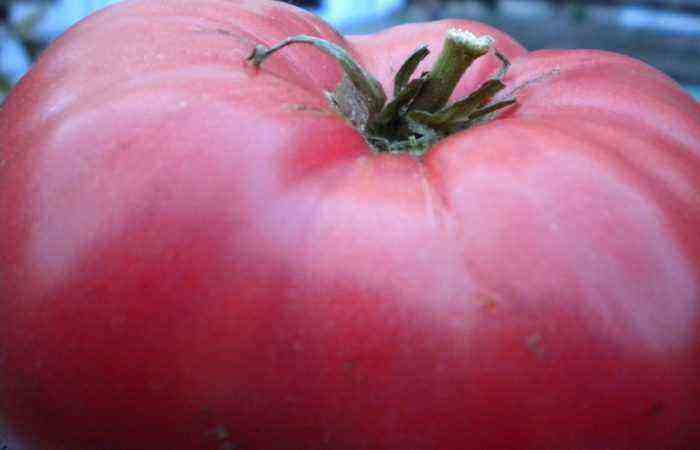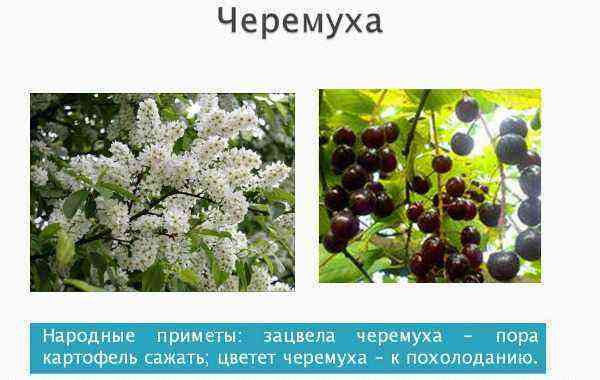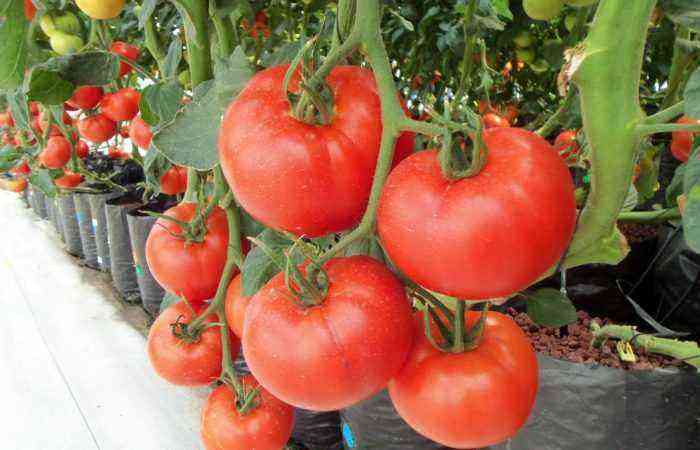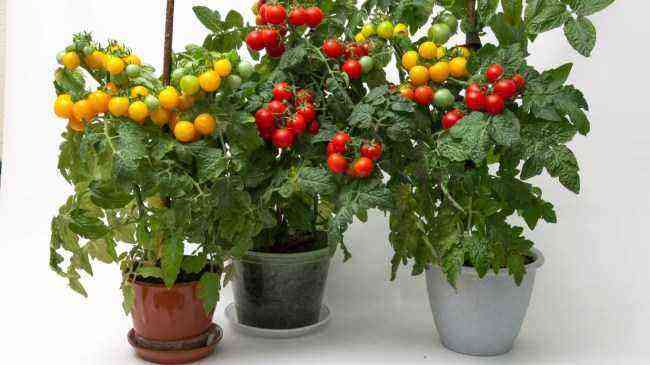Inexperienced vegetable growers believe that the more branches and the larger the green tomato bush, the better the harvest will be. These expectations may not be met. The number of fruits in the green chaos may be scanty.
The plant needs to be helped to rationally distribute forces between the growth of the bush and fruiting. To achieve the highest yield of tomato in the open field, you need to know the rules and schemes for the formation of a bush in accordance with varietal characteristics and growing conditions.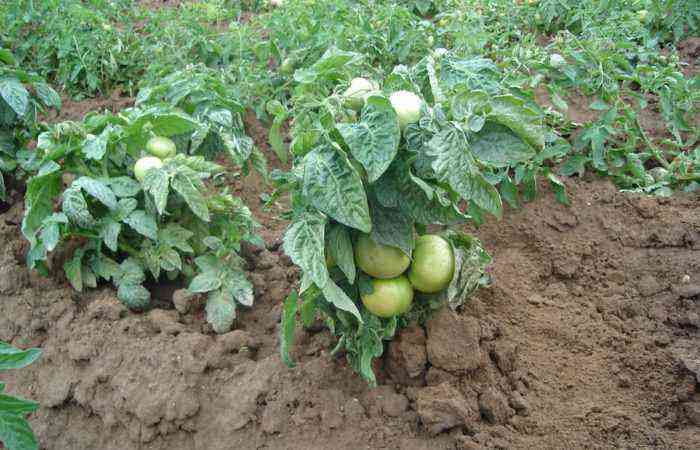
Why grow tomatoes outdoors?
The growth and development of tomato plants under favorable weather conditions is very intensive. Already at the seedling stage, flower brushes begin to be laid, and new shoots (stepchildren) appear in the axils of the leaves. If they are not removed, they will soon turn into a new branch, in the axils of the leaves of which shoots of the next order will appear.
Depending on the varietal characteristics, such growth can be of different intensity. If for some varieties the uncontrolled growth of shoots is not a problem, then others will direct all their energy to the growth of green mass, to the detriment of the fruit harvest. In addition, thickened bushes are poorly ventilated, therefore, conditions are created for the development of various diseases.
Formation is agrotechnical measures (stepping, topping, removing leaves) aimed at artificially regulating the number and size of the vegetative organs of a tomato plant.
The main task of the formation is the concentration of the internal potential of the plant for fruit set and their ripening, that is, to increase productivity.
Comparing different schemes for open ground
To get a good harvest, the number of flower brushes on which the fruits will tie and ripen should be as high as possible. Formation schemes differ in the number of stems:
- In 1 stem – fruit formations should lay up, as high as possible. More suitable for tall varieties.
- In 2 stems – for varieties of undersized and medium-sized, with a long growing season;
- In 3 stems – for undersized varieties, with short growing seasons.
Each scheme has its own advantages in certain conditions. If you form tall indeterminate tomatoes into three stems, the root system will not be able to provide them with good nutrition during the long growing season. If, in one stem, without continuation, a low-growing determinant variety is formed, the vegetation can end with only 2-3 brushes.
Formation of a bush in 1 stalk
- When to start.
The first pinching is carried out as early as 7-14 days after planting. By this time, the plant takes root and begins intensive growth. To form a bush into one stem, all stepchildren appearing from the axils of the leaves must be removed. The optimal shoot size for breaking out is 3-5 cm.
When overgrown stepchildren are removed, the stem is injured, the size of the wound increases, which contributes to infection.
- How to stepson.
Usually stepchildren are broken out by hand. To do this, it is rejected from the sinus away from the stem and pressed down. The procedure is best done in the morning, when the shoots contain more moisture and are very fragile. Overgrown shoots are carefully cut out with a disinfected knife, without damaging the stem and petiole of the leaf.
- When and how to pinch.
Formed in one stem in the open field most often, interderminant tall tomatoes. They have medium and late maturation and unlimited upward growth. Weather conditions in autumn do not allow all the fruit that sets to ripen. To speed up ripening, pinch the top of the shoot. It is carried out two leaves after the last flower brush left to ripen.
- Removing leaves.
Pinching is carried out as the stepsons grow, and in parallel with this, one or two leaves are broken off below the fruit brush. A large number of leaves leads to irrational consumption of nutrients, creates shading, and impairs fruit ripening.
In 2 stalks
- When to start.
The basis of the bush in two stems is laid during the period:
- first stepson;
- at the stage of seedling production (early pinching method).
- How to stepson.
To get a bush with two stems:
- On the main stem, below the first flower brush, a healthy shoot is left, which is cared for in the same way as the main one. Over time, they will become equal. Other lateral processes from the axils of the leaves are removed.
- At the stage of seedling production, pinch the growing point of the seedling after the second true leaf. Then shoots will grow in the axils of the first and second leaves, which will become equivalent stems. Other shoots on the stems are removed.
- When and how to pinch.
Low-growing and medium-sized varieties of determinant tomatoes, formed in two stems, pinching is not required. An exception is made in case of adverse weather conditions or a late start of the growing season. Tall varieties are pinched after 5-6 fruit brushes.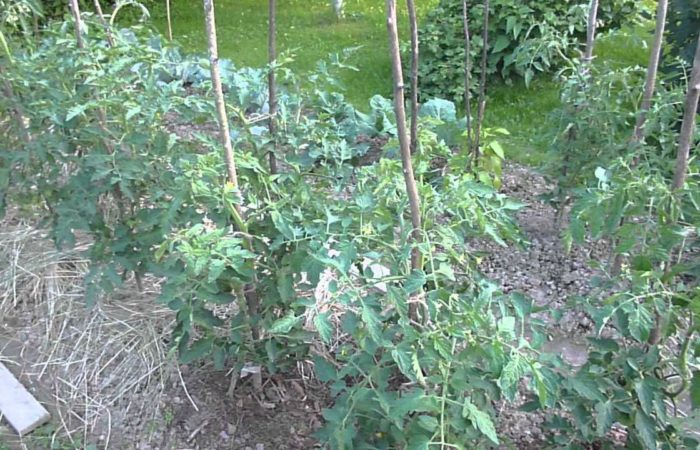
- Removing leaves.
It is carried out according to the same scheme as in single-stem plants – no more than two from each stem per week.
Attention! Leaves affected by diseases are removed first.
In 3 stalks
- When to start.
The second productive stepson on the main stem is left as it grows during the first or next stepson. The stepson must be healthy, without injuries.
- How to stepson.
The best effect is obtained when the stepchildren are removed at the initial stage of their development, in the first leaf phase. At the same time, the plant is less injured, and the stepson breaks out with a crunch even with light pressure.
- When and how to pinch.
Pinching the growth point is carried out as needed:
- If there is a threat that all the brushes will not have time to form, and the fruits will not ripen.
- If one of the stems is significantly behind in development. It’s not worth spending food on it. Its top is pinched 2 leaves after the flower brush.
- Removing leaves.
Three stems together form a wide bush, so there will be three times as many leaves. To create favorable conditions for the development of fruits, the leaves must be broken off regularly, according to general rules.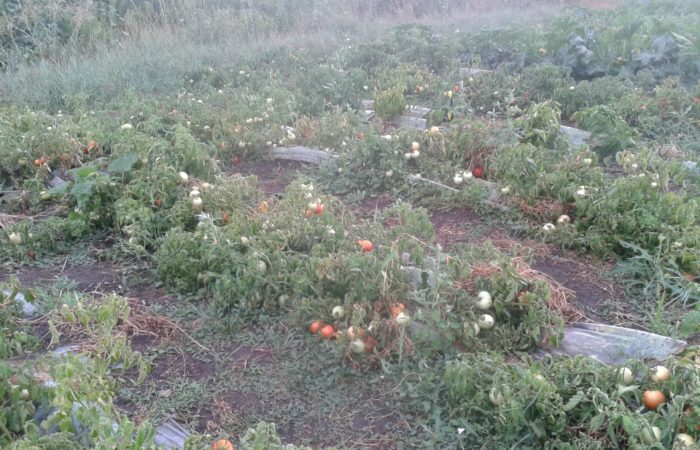
How to properly form a bush in determinant tomatoes
Tomatoes of this group are very diverse, have a height of 50 cm to 1,5 m, but their growth is limited to a certain number of fruit clusters. The formation of determinant plants is carried out according to different schemes: in two or three stems, in one stem with the transfer of fruiting to a side shoot. The first method allows you to increase the number of ovaries that will simultaneously develop on adjacent stems. The bush will give the harvest together before the onset of adverse weather conditions.
Rule for indeterminate varieties
Favorable weather conditions for growing tomatoes in open ground are short-lived. Therefore, despite the fact that plants of indeterminate varieties have unlimited growth, it has to be reduced artificially.
If this is not done, the set fruits will not have time to ripen. Plants form in one stem.
The first flower brush is laid over the 9-12 leaf. The formation of the following brushes occurs continuously – every 3-4 sheets. Depending on the region and weather conditions, they determine at what period to pinch the top of the stem so that the tomatoes have time to ripen before the cold weather.
Do I need to form a bush bush in superdeterminant tomatoes
These are low-growing plants that have a small number of fruit brushes (3-5). The plant lays exactly as many fruits as it can provide nutrition. Pasynkovanie them can not be carried out.
The correct choice of the scheme for the formation of a tomato bush in the open field is the key to a good harvest. The labor costs of carrying out the work will certainly pay off.
